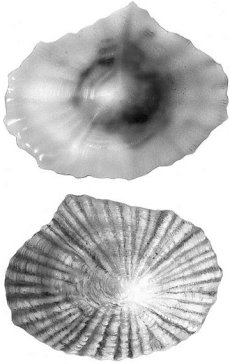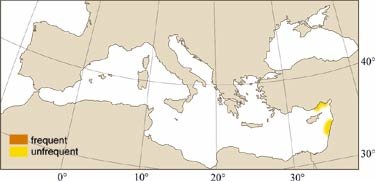
|
Relevant Synonyms
Misidentification
|
|
| drawing: Tuvia Kurz |
|
SHORT
DESCRIPTION
color :
inside brownish, beige and cream.
common size :
25 mm (max.). |
DISTINGUISHING CHARACTERISTICS
BIOLOGY / ECOLOGY
habitat :
high intertidal, on or under rocks. Living specimens of Siphonaria crenata were found above the water line fastened to rocks lying dry (Barash and Danin, 1992). |
|
1st
Mediterranean record
|

|
|
DISTRIBUTION
|
ESTABLISHMENT SUCCESS
speculated reasons for success :
|
|
|
MODE OF
INTRODUCTION |
IMPORTANCE TO
HUMANS |
|
KEY
REFERENCES
|
|
|
 Siphonaria kurracheensis Reeve, 1856
Siphonaria kurracheensis Reeve, 1856